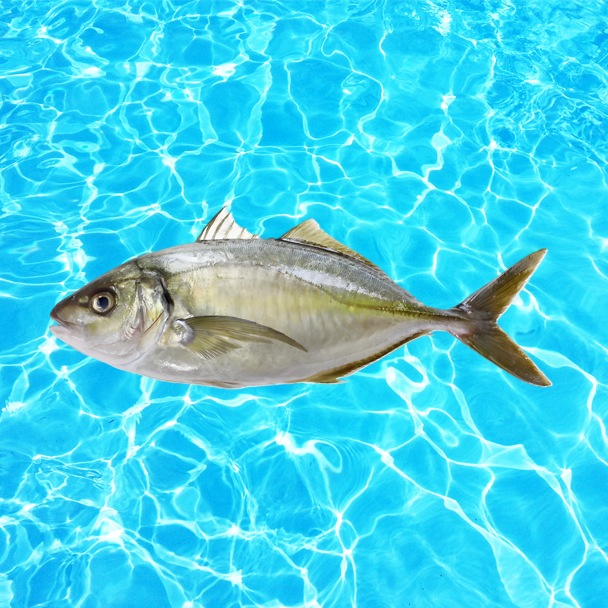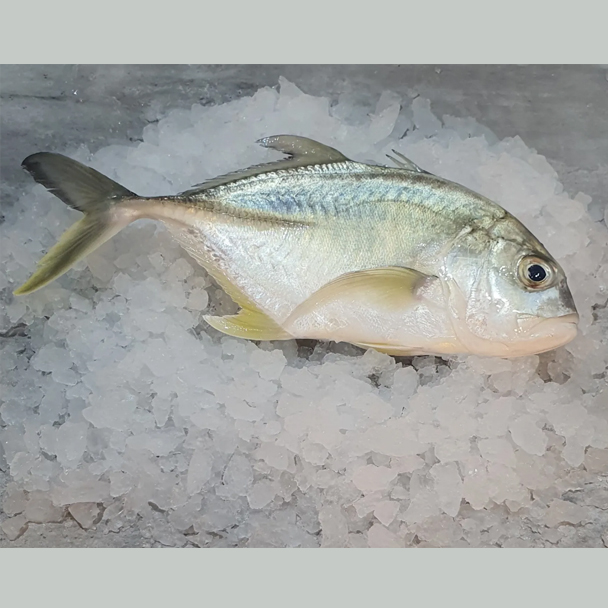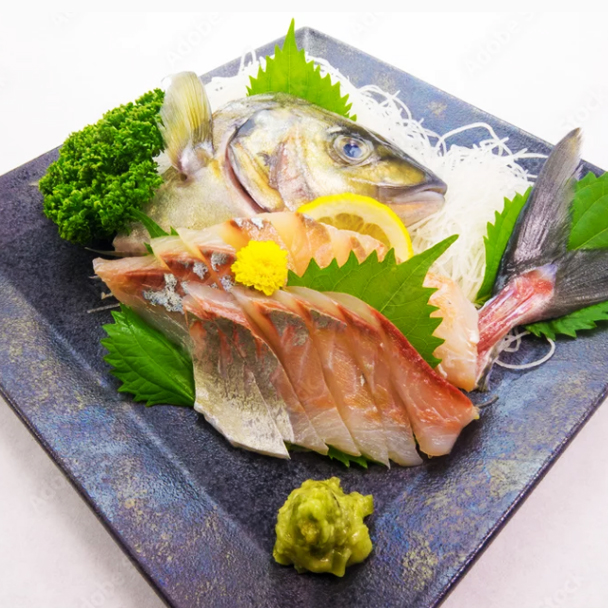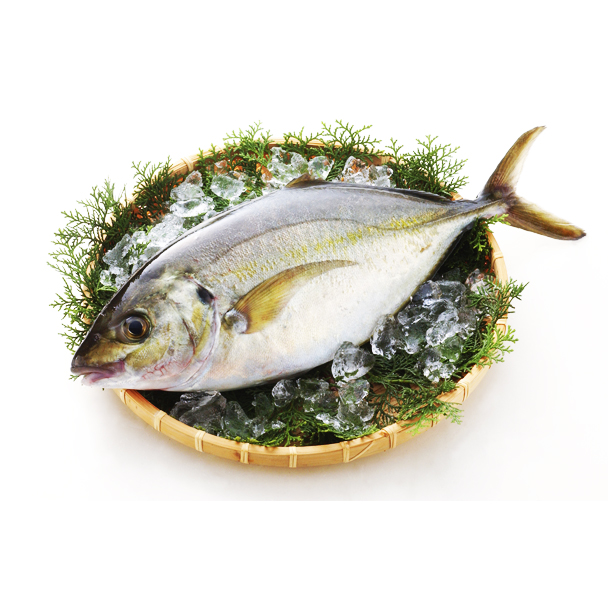








White trevally (*Pseudocaranx dentex*), known as “Shima-aji” in Japanese, is a mid-to-large migratory marine fish belonging to the Carangidae family. It is widely distributed in warm coastal waters of Japan, Taiwan, China, and parts of the Pacific Ocean. The fish has a streamlined, fusiform body with smooth skin, a bluish-gray back, silvery-white belly, and a distinctive yellow horizontal stripe along its sides, giving it an elegant appearance.
White trevally is highly valued in Japanese cuisine for its firm, white flesh, moderate fat content, and pleasant texture. Its flavor is clean and refined—somewhere between tuna and sea bream—making it an ideal ingredient for sashimi and sushi. It is also delicious when lightly grilled, steamed, or salt-roasted. The fish is considered to be at its best in the summer season, when its meat is most flavorful, and is widely appreciated in high-end Japanese dining.
Rich in high-quality protein, unsaturated fatty acids, and various trace minerals, white trevally is not only delicious but also considered beneficial to health. In recent years, it has been successfully cultivated through aquaculture and has become a high-value seafood product exported to various international markets. With its combination of excellent taste, nutritional value, and strong market potential, white trevally is regarded as one of the most representative and premium fish species in both modern aquaculture and Japanese gastronomy.
